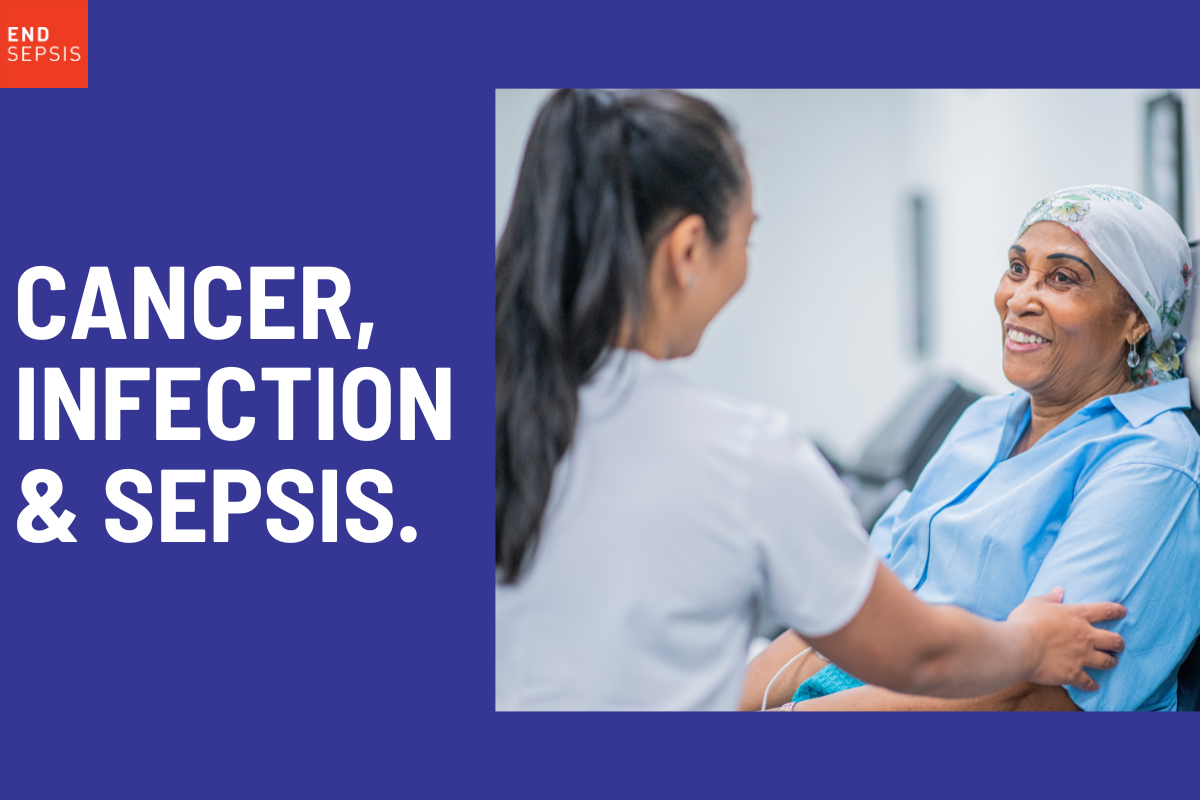
Having cancer, along with treatments like chemotherapy, significantly increases the risk for infections and sepsis. These are serious medical emergencies that can disrupt treatment, lead to hospitalization, or even result in death.
An infection occurs when harmful germs invade the body, causing illness, tissue damage, or disease. For cancer patients, infections can quickly escalate to life-threatening levels.
Sepsis is an extreme and potentially fatal reaction to infection, leading to tissue damage and organ failure. Anyone with cancer can develop sepsis from an infection anywhere in the body.
Why Does Chemotherapy Increase the Risk for Infection and Sepsis?
Chemotherapy targets fast-growing cells, including cancer cells, but it also affects healthy cells like white blood cells, which are crucial for fighting infections. With fewer white blood cells, particularly neutrophils, the body becomes less capable of defending against infections, increasing the risk of complications like sepsis. This condition, known as neutropenia, is a common side effect of chemotherapy. Doctors routinely monitor neutrophil levels to assess infection risk.
Preventive measures, such as good hygiene and early infection detection, are key to minimizing risks during treatment.
Learn the Signs of Sepsis:
Knowing the signs and symptoms of sepsis is essential for early intervention, especially for those undergoing cancer treatment. Symptoms like fever, chills, rapid breathing, confusion, feeling the sickest you’ve ever felt, or an unusually fast heart rate can indicate the onset of sepsis. Since sepsis can develop and worsen quickly, recognizing these warning signs and seeking immediate medical attention can be lifesaving. Awareness and prompt action are key in reducing the risk of severe complications and improving the chances of recovery.
Advocate for Yourself and Loved Ones:
Sepsis survivor Jessie shared her experience, highlighting the importance of self-advocacy, especially when navigating gaps in the healthcare system.
“Self-check: Know your body. My routine mammogram didn’t detect my cancer, but a self-exam did. Check yourself regularly and don’t rely solely on tests.
Self-advocate: Trust your instincts. If something feels off, speak up. Don’t be afraid to question doctors, seek second opinions, or push for further testing. You are your own best advocate.
Self-educate. Know the signs: Learn the symptoms of breast cancer and sepsis. Sepsis can easily be mistaken for the flu or other common ailments, which makes it so dangerous.”
You can also learn more about cancer and sepsis in this handy fact sheet from the CDC.

